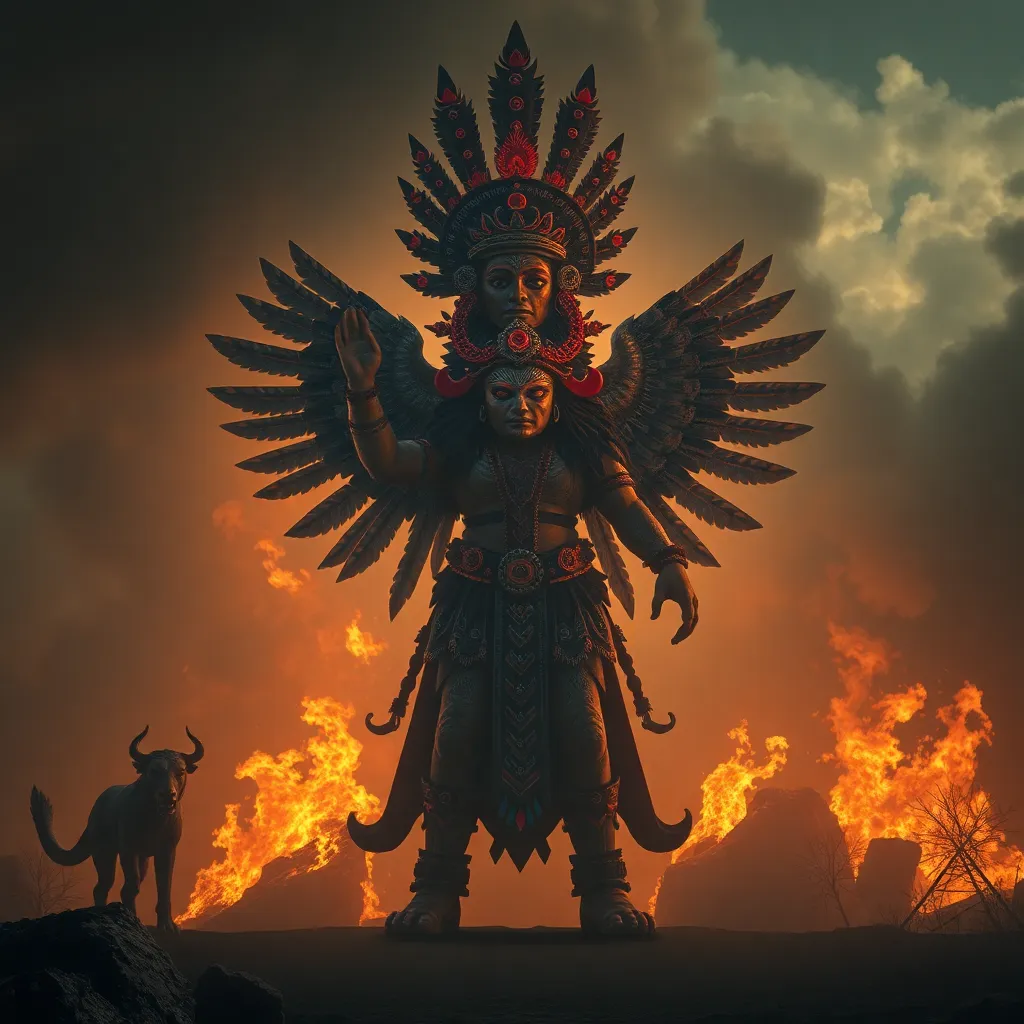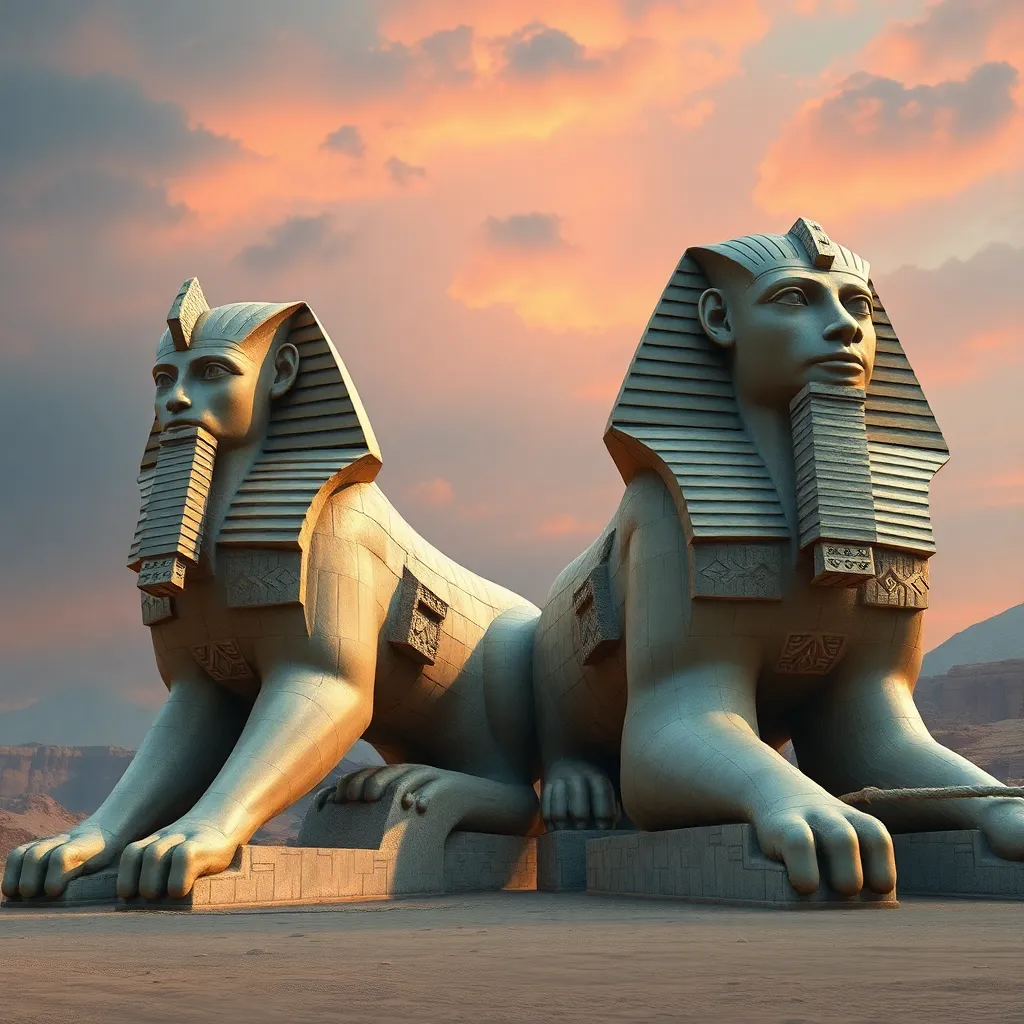Ahuizotl: A Glimpse into the World of Aztec Gods and Goddesses
I. Introduction
Aztec mythology is a rich tapestry of gods, goddesses, and mythical creatures that played a crucial role in the cultural identity of the Aztec civilization. Among these figures, Ahuizotl stands out as a significant entity, embodying the mystique and power of the natural world. This article delves into the fascinating world of Ahuizotl, exploring its characteristics, origins, and the role it played within the broader context of Aztec mythology.
Understanding Ahuizotl not only sheds light on a unique aspect of Aztec lore but also emphasizes the importance of exploring ancient deities that have shaped cultural narratives throughout history. By examining Ahuizotl, we gain insight into the values, fears, and beliefs of the Aztec people.
II. The Mythology of Ahuizotl
Ahuizotl is often described as a creature resembling a dog or a mix between a dog and a water beast, featuring a long, flexible tail and hands like a human’s. Its most distinctive characteristic is the fur-covered body, which is said to be sleek and dark, allowing it to blend into the depths of lakes and rivers.
In Aztec lore, Ahuizotl serves as a guardian of water bodies, particularly lakes and rivers, where it is believed to lure unsuspecting victims to their watery graves. The creature is often depicted as both a protector and a threat, embodying the duality of nature itself.
When compared to other mythical creatures, Ahuizotl shares similarities with figures such as the Chupacabra and other water-dwelling monsters found in various cultures. However, its unique attributes and role within Aztec mythology set it apart as a distinct entity.
III. The Origin and Etymology of Ahuizotl
The name “Ahuizotl” derives from the Nahuatl language, with “ahuitzotl” meaning “water dog.” This etymology reflects the creature’s association with water and its canine-like characteristics. The linguistic roots provide insight into how the Aztecs perceived the creature and its relevance to their environment.
Historically, Ahuizotl is thought to have originated in the pre-Columbian era, with references found in various codices and oral traditions. The creature’s impact on the cultural landscape of the Aztecs showcases the interplay between mythology and the natural world.
Culturally, Ahuizotl held significance for the Aztecs as a representation of the dangers and mysteries of water. Lakes and rivers were vital resources, yet they also posed threats, making Ahuizotl a symbol of the need for respect and caution in the face of nature.
IV. Ahuizotl in Aztec Cosmology
Ahuizotl occupies a unique place in the pantheon of Aztec gods and goddesses, often associated with Tlaloc, the god of rain and water. This connection emphasizes the importance of water in Aztec cosmology, linking Ahuizotl to fertility and agricultural prosperity.
The relationships Ahuizotl holds with other deities reveal much about Aztec beliefs. For instance, Ahuizotl is sometimes seen as a servant to Tlaloc, performing tasks related to the maintenance of water bodies. This relationship highlights the interdependence of deities within Aztec mythology.
Symbolically, Ahuizotl is often represented in art and culture through various forms, including pottery, codices, and sculptures. Its depictions often emphasize its aquatic nature and dual role as both protector and predator.
V. Ahuizotl in Aztec Rituals and Practices
Ceremonial practices involving Ahuizotl were intertwined with the Aztecs’ reverence for water and the natural world. Rituals often took place near lakes and rivers, where offerings were made to appease the creature and ensure safe passage for fishermen and travelers.
- Water Rituals: These rituals emphasized the significance of water as a life-giving force and included prayers and offerings to Ahuizotl.
- Offerings: The Aztecs believed in making offerings to Ahuizotl, which sometimes included food, flowers, and other items associated with nature.
The connection between Ahuizotl and sacrifice is particularly noteworthy. While the Aztecs are often remembered for their sacrificial practices, Ahuizotl’s role was more about preserving balance within the ecosystem rather than demanding bloodshed. Nevertheless, the fear of Ahuizotl could lead to local legends about sacrifices made to appease the creature.
VI. Folklore and Legends Surrounding Ahuizotl
Numerous myths and stories surround Ahuizotl, contributing to its status as a legendary figure within Aztec culture. One popular tale tells of a fisherman who encountered Ahuizotl while casting his net, only to be pulled underwater by the creature. This story serves as a cautionary tale about the dangers of water and the respect required when engaging with nature.
The impact of Ahuizotl on local communities is significant, as its legends often serve as moral lessons passed down through generations. Storytelling plays a vital role in preserving the cultural significance of Ahuizotl, with variations of the tale existing across different regions.
VII. Ahuizotl’s Legacy in Modern Culture
In contemporary culture, Ahuizotl has made appearances in literature, films, and other forms of media, often depicted as a fascinating creature rooted in ancient mythology. Modern interpretations often explore themes of nature, beauty, and danger, highlighting the enduring relevance of Ahuizotl’s story.
- Literature: Ahuizotl has been featured in novels and stories exploring Aztec mythology, providing a bridge between ancient and modern narratives.
- Media: Movies and documentaries about Aztec culture occasionally reference Ahuizotl, showcasing its place in historical discussions.
The preservation of Ahuizotl’s story in modern society reflects a broader interest in exploring and understanding ancient cultures and their deities. This interest contributes to a greater appreciation for the complexities of Aztec mythology.
VIII. Conclusion
Ahuizotl holds a significant place in Aztec mythology, embodying the complexities of nature and the relationship between humanity and the environment. The exploration of Ahuizotl reveals not only the rich tapestry of Aztec beliefs but also the enduring relevance of ancient gods and goddesses in contemporary society.
As we continue to uncover the stories of figures like Ahuizotl, we gain insight into the cultural heritage of the Aztecs, highlighting the importance of understanding and preserving ancient narratives. The tales of Ahuizotl encourage further exploration of Aztec culture and mythology, inviting us to engage with the wisdom of the past.



